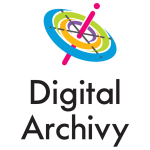Digital Archivy Scorecard for Information Appraisal (pt 2)

Digital Archivy Scorecard on Information Appraisal, part 2
As we join the nation in watching how the #ImpeachmentInquiry plays out, it is an excellent time for us to design a prototype Digital Archivy scorecard for informational appraisal. The Digital Archivy Scorecard will provide grades based on Assessment, Identity, Description, Priority, and Security Classification.
In this way, we can determine the value of content based on provenance, function, significance and accuracy. With that in mind, today we will look at one piece of critical evidence: The Transcript of July 25 phone call between President Trump and Ukraininan President Zelensky. The 9-page transcript of the conversation has disappeared from public. It was replaced by the 5-page Memo of Conversation prepared and released by the White House. This piece focuses on the “idea” of the original transcript.
 THE TRANSCRIPT
THE TRANSCRIPT
The transcript is a record of the phone call. As far as we know, there is no audio recording of it. There is a chance, of course, that the Ukrainian Government made an audio recording. Assuming there is no recording, this transcript was created by 12 employees who listen in on the call and jot down notes. Later these notes are compiled and combined by somebody, and then they are used to re-create the transcript. There is no guarantee that the final version is the most accurate representation.
You can see from the scores below, that it is lacking as a trusted source of information. By our score card, we give it straight C’s in five categories: Assessment; Identification; Description; Assign Priority; and Security Classification.
In the first stage, Assessment, we grade as a C because we cannot confirm provenance with regard to authorship. It may be collaborative, but it contains spelling errors (misspelling they’re as there). It also loses points due to the fact that editorial changes were made prior to public release.
Identification gets a B. This is not a unique (“smoking gun”) transcript, but its authorship is clear. Rather, it is one of many different calls between Trump and Zelinsky. There were additional conversations between Zelinsky and Trump, Mike Pence, Rudy Giuliani, and probably others.
Scorecard Descriptions
We give a C to Describe because the content itself is not complete. There are, for example, a number of sentences that contain ellipses. This indicates an incomplete transcript. Without knowledge of the call’s duration, the subject matter, or even the number of participants, we can not trust that this 5-page transcript is complete and accurate.
We grade Priority on this information source as a D. It is not authoritative and may serve other purposes. Also, it loses data integrity because it is an interpretation of an aural phone call. It is in a written format. This is key. Since we do not have access to additional supporting materials (e.g., complete notes or an audio recording) yet, this is a non-trusted source.
We give Security Classification an F. This document was declassified and semi-redacted and clearly serves political issues. In fact, the redactions serve to undermine the authority of the message. We cannot look at it as an unvarnished truth. Also, it is an interpretation of one of many phone calls in which the US Administration asked for a favor and withheld funds promised and approved by the Congress.
Conclusion
Read more about the transcript itself from The Washington Post’s. However, the article focuses more on the preparation of the MemCon (Memorandum of Conversation). The Post also warn us on its value: “Don’t rely on whatever transcript is released,” said a former staffer, who spoke on the condition of anonymity to comment candidly. “Even if it’s unredacted; those transcripts are heavily edited by political leadership at NSC. I’ve seen substance deleted from these call ‘transcripts’ to delete either superfluous details or more substance.” Here’s an article from Quartz that addresses the “transcript” described herein. They state it is a full and unredacted, but it is “not a verbatim transcript of a discussion.”
Find out more about our clients and work.
Check out Part 1 on the Information Appraisal Scorecard here.
Stay tuned for Part 3 of this blog series.

